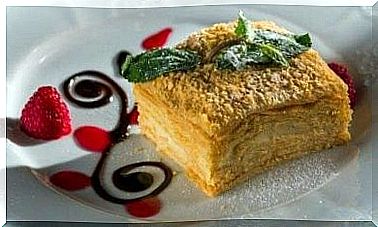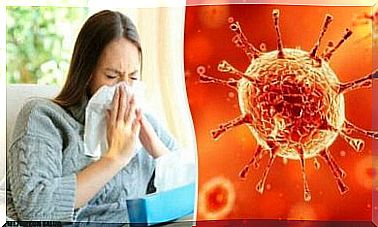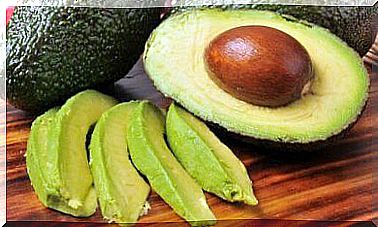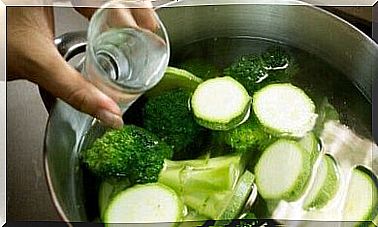What Is Matcha Tea And What Is It Used For?

Matcha tea is a product that has become popular due to its unusual properties. It comes from the same plant as traditional green tea, Camellia sinensis, but it is a powdered product with a different nutritional profile, since it is grown in a certain way.
To grow this type of tea, farmers cover the plants 20 or 30 days before harvest to avoid direct sunlight. The plants therefore produce more chlorophyll and amino acids. They even get a darker shade of green.
When it’s time to harvest them, they pick the best leaves by hand and remove the stems and veins of the plant. Then they grind the leaves until they get a light green powder, this is what they sell under the name matcha-te. Furthermore, we will tell you about the properties and use.
Nutritional properties of matcha tea
As we mentioned above, this tea is characterized by a unique nutritional profile. Although it may share some features with regular green tea, it has a higher concentration. According to the nutrition database SELF, a serving contains matcha tea (1 teaspoon or 1 gram):
- Protein (between 250 and 300 mg)
- Total amino acids (approx. 272 mg)
- Lipids (approx. 50 mg)
- Minerals such as potassium, magnesium, calcium, zinc, phosphorus and iron
- Vitamins A, B1, B2, B6, C, E and, K.
On the other hand, an estimate published in the Journal of Chromatography A suggests that the number of catechins in this type of tea is up to 137 times higher than in other types of green tea. It is therefore health-wise one of the most preferred alternatives.
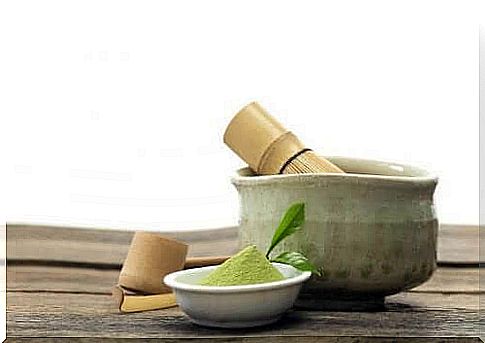
The main use of matcha tea
In recent years, matcha has been used as a nutritional supplement to promote well-being. You just mix the powder with hot water and you get a drink that complements your diet. In fact, due to its texture and taste, some people use it to make desserts, cocktails and other types of drinks.
In general, most people use it for the health benefits. Although many people still do not know it, in fact several studies have established that the components are excipients to prevent some diseases.
Brain health
The drink you make with this natural tea is often recommended to improve brain health. Due to the content of stimulants such as caffeine and L-theanine, it can help you feel more awake and increase energy levels.
In fact, a study published in Food Research International has observed that matcha can cause an increase in attention span, reaction time and memory compared to placebo. Although it is a topic that needs more research, these findings suggest that it may be a good supplement to improve brain performance.
Heart health
Due to the concentration of catechins, this type of tea also has beneficial effects on heart health. According to a review of studies published in the medical review Current Medical Chemistry , catechins have antioxidant and anti-inflammatory effects in addition to being good for platelets.
Matcha and other types of green tea are therefore excipients for the reduction of high cholesterol, blood pressure problems and other factors that increase the risk of chronic cardiovascular disease.

Body weight
Another use of matcha has to do with body weight. It is important to note that it is not one of the “miracle products” that promise to help you lose weight in a short time. However, including it in a healthy and calorie-controlled diet can promote weight loss.
In a study published in The American Journal of Clinical Nutrition, consuming green tea extract helped increase fat burning by up to 17% during moderate exercise. In addition, other studies have linked consumption with higher energy consumption.
In any case , it is a topic that is still being investigated and there is not enough evidence to make final statements. Therefore, if you are trying to lose weight, it is important to prioritize the recommendations your doctor and nutritionist give you.
Side effects and contraindications of matcha-te
For most healthy adults, this tea is considered safe as long as you moderate your consumption. Two or three cups a day are enough, each made with one gram of matcha. However, due to the caffeine content, it can cause side effects, especially when you exceed the dose or in people who are sensitive to caffeine.
Such effects include:
- Irritability
- Insomnia
- Headache
- Palpitations
- Dizziness
- Nausea and vomiting
In addition, as stated in a literature review published in the Chinese Medical Journal, the catechins in this tea may affect your iron absorption, for example, in patients with iron deficiency anemia. It can also affect your zinc absorption.
Patients with heart disease, kidney problems or stomach ulcers should avoid drinking this tea without talking to a doctor first. The components may interfere with some medications used to treat these conditions.

